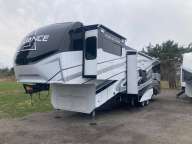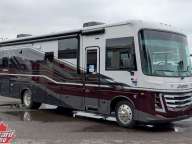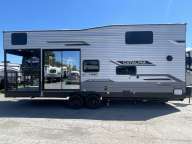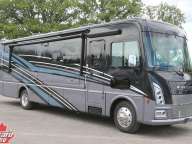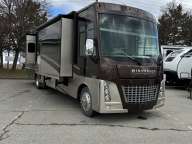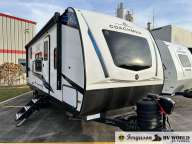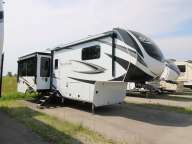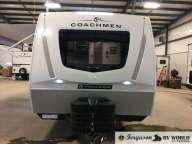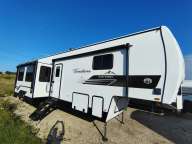Choosing between off-road vehicles can feel overwhelming when you're not sure what sets them apart. Many riders struggle to understand which vehicle best suits their needs for work, recreation, or family adventures. At Capital RV, we help customers navigate these decisions every day.
In this guide, we will explain the UTV versus ATV debate to help you make an informed choice.
Understanding ATVs: The Agile Four-Wheeler
An all-terrain vehicle (ATV), commonly called a four-wheeler or quad, offers a compact and nimble riding experience. You control the vehicle with handlebars while sitting on motorcycle-style seating, creating an engaged and active ride. Most ATVs accommodate a single rider, making them ideal for solo adventures.
ATVs excel in situations where manoeuvrability matters most. Their smaller size lets you navigate tight trails that larger vehicles cannot access. These vehicles shine when you need to transport them easily in a pickup truck bed or store them in limited garage space.
Exploring UTVs and Side-by-Sides: Built for Versatility
A utility terrain vehicle (UTV) represents a type of side-by-side designed primarily for work and utility purposes. The side-by-side seating arrangement allows you to ride beside passengers. These vehicles feature car-like controls with a steering wheel and foot pedals, plus safety features like seatbelts.
UTV vs. ATV: How Costs and Value Compare
Both vehicle types come at various price points depending on engine size, features, and intended purpose. ATVs typically cost less than UTVs, making them attractive for budget-conscious buyers. However, purchasing one UTV that carries your entire family may prove more economical than buying multiple ATVs.
Advanced suspension systems, increased horsepower, and specialized features add to the price of both vehicles.
Key Factors in the UTV vs. ATV Decision
When evaluating the UTV versus ATV choice, your intended use determines which vehicle serves you best. Consider these essential factors when evaluating your options:
- Passenger capacity: ATVs typically seat one rider, while UTVs accommodate two to six people.
- Hauling needs: UTVs offer superior cargo space and towing capacity for heavy-duty tasks.
- Trail restrictions: ATVs access narrower trails that may prohibit wider vehicles.
- Physical engagement: ATVs require more body control, while UTVs drive like small cars.
- Storage and transport: ATVs fit more easily in standard truck beds and garages.
Recreational riding demands different features than work applications. Understanding the safe use requirements for both vehicle types helps you select one that fits your needs and abilities.
Capital RV: Your Off-Road Vehicle Experts
The UTV versus ATV choice ultimately depends on your unique riding needs, terrain, and passenger requirements. At Capital RV, we understand that selecting the right off-road vehicle represents a significant investment in your outdoor lifestyle. Our team specializes in helping customers find the perfect recreational vehicles to match their adventures, whether you need utility capabilities or recreational performance.
Browse our selection of quality ATVs to find the ideal machine for your next adventure. We'll help you discover which vehicle fits your needs perfectly. Call Capital RV at (833) 758-1244 to discuss the UTV versus ATV decision with our knowledgeable staff.



